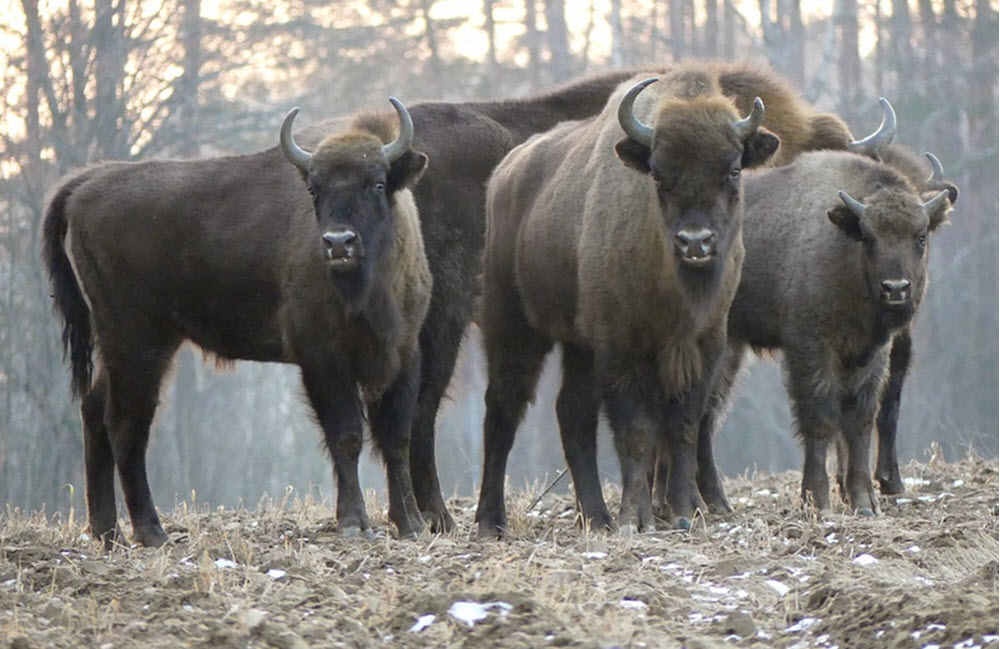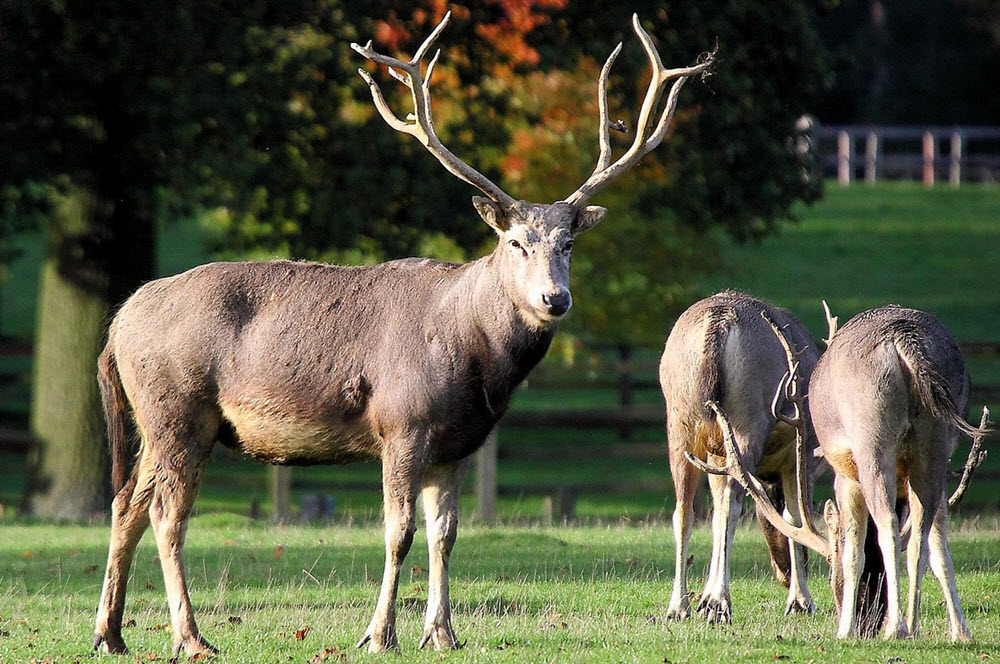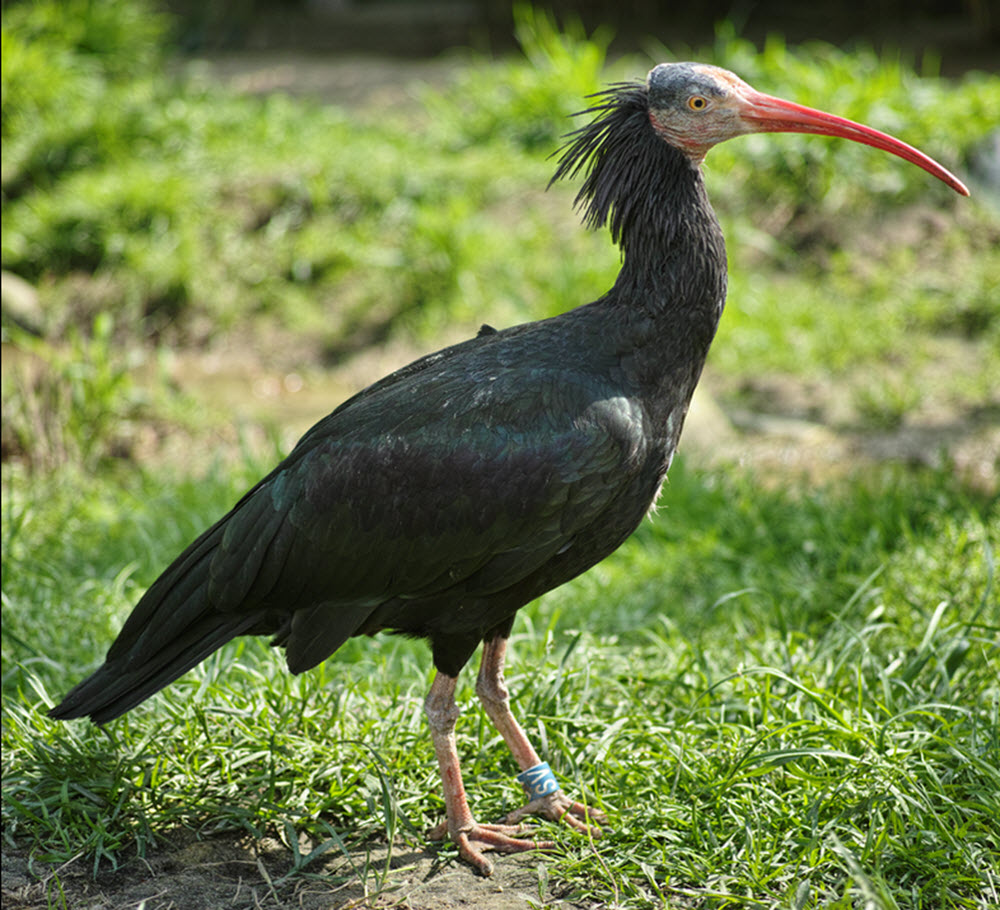Rewilding
Conservation efforts that aim to restore native species, natural processes and wilderness areas are commonly known as rewilding. The term was coined by the network Earth First! and first appeared in print back in the 1990s, even though the general idea is older.
In their influential 1998 paper, conservation biologists Michale Soulé and Reed Noss describe rewilding as a conservation method based on ”cores, corridors and carnivores”.
With rewilding projects, there is usually an emphasis on the gradual development of a biodiverse ecosystem that will eventually require no or little human management. This contrasts rewilding with more active forms of natural resource management and preservation. It should be noted though, that in some contexts, the term rewilding is used when an animal is reintroduced to the wild, even if it is not primarily carried out as a part of a larger project to re-establish an ecosystem.

Examples of key aspects commonly included in rewilding projects:
– Core wilderness areas that are connected with each other through corridors
– The preservation and/or reintroduction of keystone species (which have a big impact on their environments, such as beavers and big ungulates)
– Apex predators that help keep other animal populations at sustainable levels
– The inclusion of local human residents and organisations to promote cooperation and mutual benefit rather than conflicts over the use of local natural resources. Many successful rewildering projects have an emphasis on creating local jobs in the green tourism sector and promoting interest in locally produced products from nearby small-scale farms and artisans.
Supporters:
Daytrading.com
Daytrading.com is a website that will teach you about day trading and other types of trading. They have beginners guides that explain how day trading works as well as more advanced guides for experienced traders. Daytrading.com makes it very easy to choose which trading platform is best for you. This is true regardless of what you want to engage in stock, CFD, options or forex trading. They feature over 35 000 different comparison pages where you can compare different brokers.
Investing.co.uk
Investing.co.uk is a guide that will help you learn more about how you can invest your money successfully.
Investing.co.uk contains guides that will teach you to use copy trading to be able to make money from other peoples expertise. They also feature guides on forex trading, CFD trading and many other types of trading that are suitable for those who want to become more active traders rather than just passive investors.
Examples of rewilding efforts world-wide
The Gondwana Link
This is a very large conservation project proposed in Australia, and it calls for the creation of an uninterrupted link of bushland stretching for 100 km from the wet forests in Australia´s far south-west to the dry woodlands and shrublands bordering the Nullarbor Plain. The aim is to help restore the ecological integrity of south-western Australia, since extensive agricultural clearings in the region have caused a fragmentation of the native ecosystems.
The suggested Gondwana Link would run along a stretch of land where a lot of native bushlands still remains, and would therefore help connect wilderness areas with each other. Although the project is far from completed, some of the land has been acquired and conservation covenants have been signed. The work is carried out in conjunction with members of the indigenous Noongar people.
Work with the Gondwana Link started in the early 2000s, when Bush Heritage Australia (BHA) purchased the 3 sq mi Chereninup Creek Reserve between the Stirling Range National Park and the Fitzgerald River National Park, on the southern edge of Australia´s Wheatbelt. The Gondwana Link Inc corporation was formed in 2012 to replace more informal coalitions.
One of the key aspects of the project is to, to a high degree, restore and preserve vegetation in a way that reflects the pre-agricultural composition and structure of the landscape. That means a rich and varied mosaic of native species.
The Yellowstone to Yukon Conservation Initiative (Y2Y)
The Yellowstone to Yukon Conservation Initiative (Y2Y) aims to connect and protect the 2,000 mile Yellowstone to Yukon region, an area partly in Canada and partly in the United States.
Work has been ongoing since the early 1990s and a myriad of collaborators have joined, including everything from U.S. and Canadian governmental agencies and Indigenous governments to grassroots groups, businesses, landowners, and researchers.
The work aims to protect, connect and restore natural environments along the spine of the Rocky Mountains, from the Yukon Territory of Canada to the Greater Yellowstone in the United States. This would, among other things, involve the preservation of native wildlife and the restoration of damaged ecological processes.
Already existing nature preserves (at varying levels of protection) function as important nodes in the chain, and new protected and restored areas are gradually being added to connect the nodes with each other and with new nodes along the way.
Having sustainable local economies along the stretch is integral to the work, and so it preserving and utilizing the knowledge of local residents, including Indigenous nations.
Area de Conservación Guanacaste
This is a network of protected areas and World Heritage Sites in Costa Rica´s Guanacaste province. Among other things, it contains an unbroken tract of tropical dry forest filled with vulnerable species such as the Great green macaw, the Central American tapir and the Mangrove hummingbird. Other examples of environments found here are rainforest, cloud forest and coastal habitats.
The conservation area includes both Guanacaste National Park, Santa Rosa National Park, Rincón de la Vieja Volcano National Park, and Junquillal Bay Wildlife Refuge. Today, the conservation area covers 1,470 sq km – and a lot of this land has been assembled gradually over the years by purchasing land step-by-step to connect protected areas with each other. The Santa Rosa National Park is one of the oldest hubs, as this park was established back in 1971.
Re-introducing the Père David´s deer to China

One example of an animal that has already been introduced as part of rewilding projects in Asia is the Père David´s deer which has been re-introduced in China. This deer was hunted to extinction in China in the late 1800s, but the species did not die out since specimens had been brought to Europe where they were bred in captivity. In the 1900s, the nobleman Herbrand Russel, 11th Duke of Bedford, brought deer from the Berlin Zoo and built up a large herd on his estate. In the 1980s, his great-grandson donated several dozen deer to the Chinese government. As of 2015, roughly 700 individuals lived in China – all descendants of the Duke´s herd.
Re-introducing the Northern bald ibis to Europe
The Northern bald ibis was once widespread in Europe, the Middle East and northern Africa, but was extinct in Europe over 300 years ago and has later declined sharply in the rest of its range too. Today, almost all the wild specimens live in the Souss-Massa National Park in Morocco (roughly 500 birds).

Re-introduction efforts are complicated by the young ibis´s need to learn migration skills from more experienced ibis birds.
- Two Northern bald ibis reintroduction and research projects are underway in Austria; one in Grunau and one in Kuhl.
- The Scharnstein Project is trying to teach the birds migration skills using ultralight planes as guides.
- Proyecto Eremita is a Spanish reintroduction program at the Ministry of Defence training ground in Barbate, Cádiz Province.
Projects in the pipeline
Many rewilding projects are currently being considered worldwide. One example is the suggestion of introducing tigers in Iran. The Amur tiger (Siberian tiger) is currently under consideration for introduction to Iran, as a proxy for the extinct Caspian tiger. The Caspian tiger, which is a subspecies, was declared extinct in the early 21st century.
Another example are the plans of moving sea lions from U.S. waters to the Sea of Japan. The California sea lion is considered for introduction in areas where the closely related Japanese sea lion used to live. The Japanese sea lion was declared extinct in the 1970s, chiefly due to hunting. In 2007, the South Korean Ministry of Environment announced that South Korea, North Korea, Russia and China was going to collaborate on bringing sea lions back to the Sea of Japan, and that the first step would be to search for any surviving Japanese sea lions. If such animals can not be found, the next step will be introducing California sea lions from the United States.